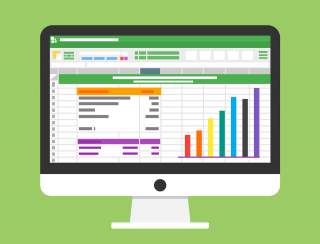Using Google Analytics

Google Analytics is a helpful tool that allows you to track traffic (anonymously) to and through websites.
The wealth of data that Google collects can help you design your site so that visitors can find the information they need and that you want to share.
Google's Guided Tours will show you around the Analytics report screens on a sample account. Tooltips within analytics include definitions and sometimes link to more information.
Where to start?
To get started in Google Analytics, choose one page that’s important to you, and name one or two major goals for that page. Here are some examples:
What defines success?
- How many different people see the page?
- How long people stay on the page, or in the section?
- Navigating to certain areas of your website?
- What needs to change?
Do they search for a question you thought you’d answered?
Do they leave quickly?
Assessing Effectiveness
We can assess the effectiveness of individual pages when we know the goals of that page:
- What’s the single most important piece of content on your page? Is it a link to Sunday services? Other Programs? The donation link?
- What do you most want people to do after visiting your page? Sign up for an email list? Visit your Facebook page?
The “Behavior > Site Content > Content Drilldown” report shows the relative popularity of different sections of the site. Google sorts content by page URLs.
The “Behavior > Site Content > All Pages” report shows the relative popularity of individual URLs on the site. If you click on a particular URL, you can select the “Navigation Summary” tab to see where people come from and go from that page.
Remember to check “Behavior > Events > Pages” for clicks on external links (which will look like site exits but may be exactly your goal) or other activities like downloading a PDF or watching a video (anything Tag Manager has been set up to track).
Apply Table Filters to Reports to find the specific data you’re looking for.
Apply Segments to Reports to isolate and compare subsets of your data, e.g. see what new visitors do as compared to returning visitors.
The Page Analytics Chrome extension can, to a limited degree, help show where on a page people are clicking. Thankfully, eye-tracking and click-tracking studies consistently support best usability practices.
Avoid Being Misled by Google Analytics
Averages, estimates, trends, and context are some of the things to keep in mind as you navigate the data collected by Google Analytics to help you avoid being misled.
- Analytics can tell us what happened, but we have to figure out the “Why?” and sometimes additional tests are called for. Usability tests (where you watch people use your site, and ask them to think aloud as they do so) can be very illuminating. A great resource for getting started with usability testing is Rocket Surgery Made Easy: The Do-It-Yourself Guide to Finding and Fixing Usability Problems by Steve Krug.
- Averages can confuse the answers: are lots of people doing a little, or a few doing a lot? Before getting carried away by an exceptional number, check the details behind it to see what most visitors are doing.
- Be aware of context: take note of site changes, other campaigns, world events, etc.
Along the bottom of the line graph in Google Analytics, there is a space for “Annotations” which can be used to indicate changes that may impact the data (e.g. “On this date we launched our new site menu.”) Existing annotations appear as little chat bubbles. - Trends can affect your data; take seasonal traffic and the day of the week into account. Your site may always see a spike on Sundays, for example, or decreased activity during August.
- Numbers are estimates: expired cookies and variances in user behavior can affect the totals. Try to get a large sample of data (over a longer period of time, perhaps) to help ensure that the relative relevance of your numbers is useful.
Video Tutorials
- Google Analytics Academy offers free online courses.
- Lynda.com is a subscription-based online training service with compelling, easy-to-follow videos. Search Lynda.com for courses on Google Analytics or related topics (e.g. Tag Manager or AdWords).
Notes to UUA Staff
Contact analytics@uua.org for access to Google Analytics for UUA.org or to schedule an individual training/review session.